In 1804, rope-maker Richard Parrott purchased his Washington, D.C. property and developed his estate. Before long, he added a "Ropewalk" for manufacturing rope, a Federal-style mansion, and gardens and orchards. The property, which was already a favorite destination among the local Georgetown community, was purchased by the U.S. government in 1911 for the creation of a public park.
"The land is there with trees and grass ready for use as a park, and our little children are here;...enhance the value of the whole District by making public property what is one of the most beautiful and picturesque tracts within its boundaries." Petition for Certain Improvements in Georgetown, D.C., U.S. Senate, 58th Congress, January 15, 1904
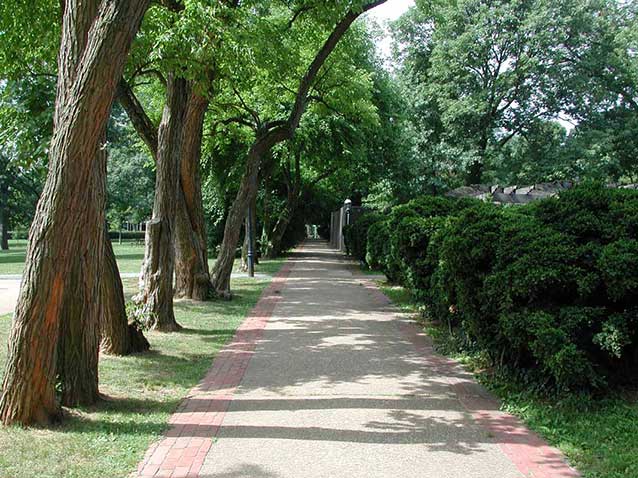
NPS (2008)
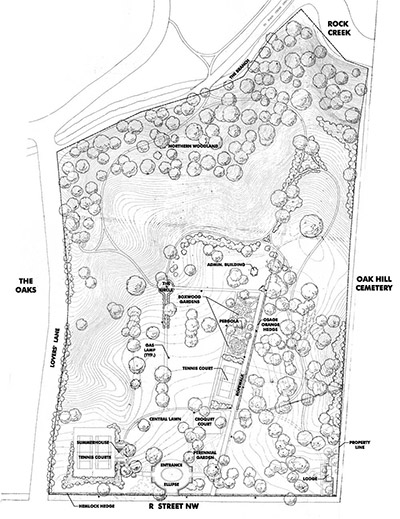
NPS
Montrose Park (U.S. Reservation #324) is a sixteen-acre park located on the heights overlooking Georgetown in northwest Washington, D.C. It is bordered on the south by R Street and a residential area; on the west by the richly designed landscape of Dumbarton Oaks Gardens (masterpiece of Landscape Architect Beatrix Farrand); on the north by a forested tributary property for Rock Creek and Potomac Parkway; and on the east by the rolling, rural landscape of Oak Hill Cemetery.
Some of the defining features of Montrose Park originated during the period when the property was a prominent estate, between 1804 and 1911. This includes the Ropewalk, Summerhouse, Boxwood Gardens, and several mature canopy trees along the edge of the plateau.
The property was purchased by the United States Government in 1911 for the creation of a public park, and the Office of Public Buildings and Grounds (OPBG) assumed the responsibility for transforming the property. Together, OPBG landscape architects George Burnap and Horace Peaslee prepared designs for the park that integrated features from the former estate’s landscape and incorporated new elements for public park use.
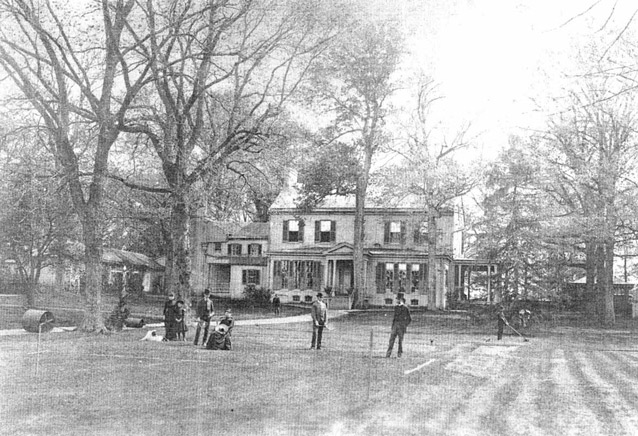
Library of Congress, Prints and Photographs Division
Management of the park was transferred to the National Park Service in 1933. In 1967, Montrose Park was listed in the National Register of Historic Places as part of a joint designation with the neighboring Dumbarton Oaks Park. The NPS completed a Cultural Landscape Report (CLR) for the site in 2004, which was followed by the listing and acceptance of the individual National Register documentation of Montrose Park in 2007.
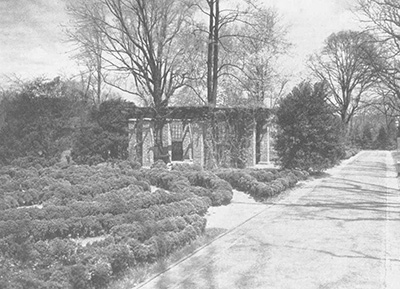
NPS / From "Parks: Their Design, Equipment, and Use" by George Burnap, 1916
Two periods of significance have been identified: 1804-1911 and 1911-1919. The first period begins in the year that the Ropewalk was initially established by Richard Parrott, and extends to 1911, encompassing the period when this property was developed into a unique estate. The second period directly follows the first, and includes the formative years of Montrose Park. During this time, landscape architects from the Office of Public Buildings and Grounds incorporated elements of the estate era into an early twentieth-century public park for the Georgetown community.
The second period of significance ends in 1919, a date which differs from the approved National Register nomination. This end date was chosen for the Cultural Landscape Inventory because it marks the termination of the formative development of Montrose Park. By that year, the property had reached its most fully conceived landscape character. This character is largely intact today, continuing to represent the period of significance. Changes made after this point were few, and without apparent plans or logic.
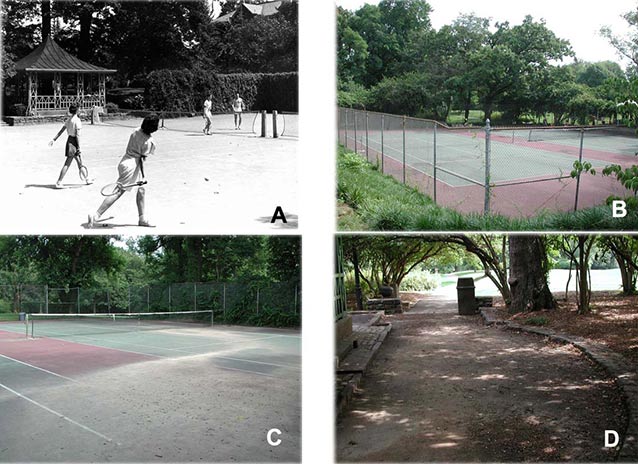
NPS
There have only been a few physical developments evident in Montrose Park since the second period of significance: the addition of a tennis court and reorientation of the Ropewalk tennis court (1925); the addition of an asphalt path from the Summerhouse to the Circle (c. 1935); the installation of the Sarah Louisa Rittenhouse Memorial (1956); and installation of a contemporary play area (2001).
Montrose Park retains integrity for its two periods of significance, 1804-1911 and 1911-1919. The landscape has been altered slightly by the changes implemented in 1925, c. 1935, 1956, and 2001. Even with these changes, however, the property still represents a nineteenth-century estate that was gracefully transformed into an early twentieth-century public park.
Quick Facts
- Cultural Landscape Type: Designed
- National Register Significance Level: State
- National Register Significance Criteria: C
- Period of Significance: 1804-1911 and 1911-1919
Landscape Links
Last updated: October 14, 2021
